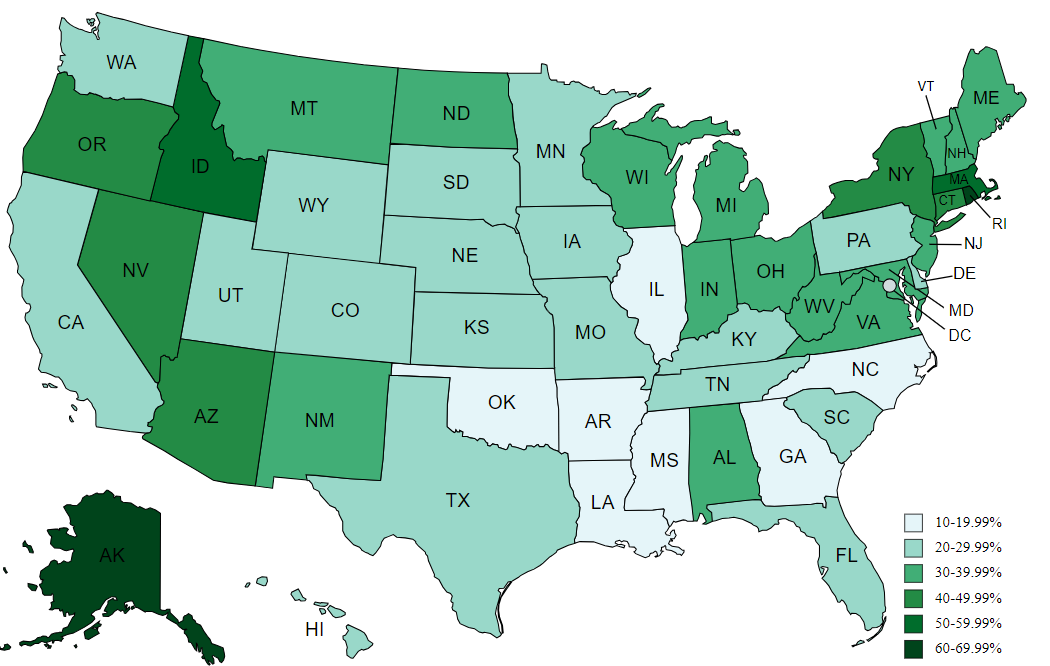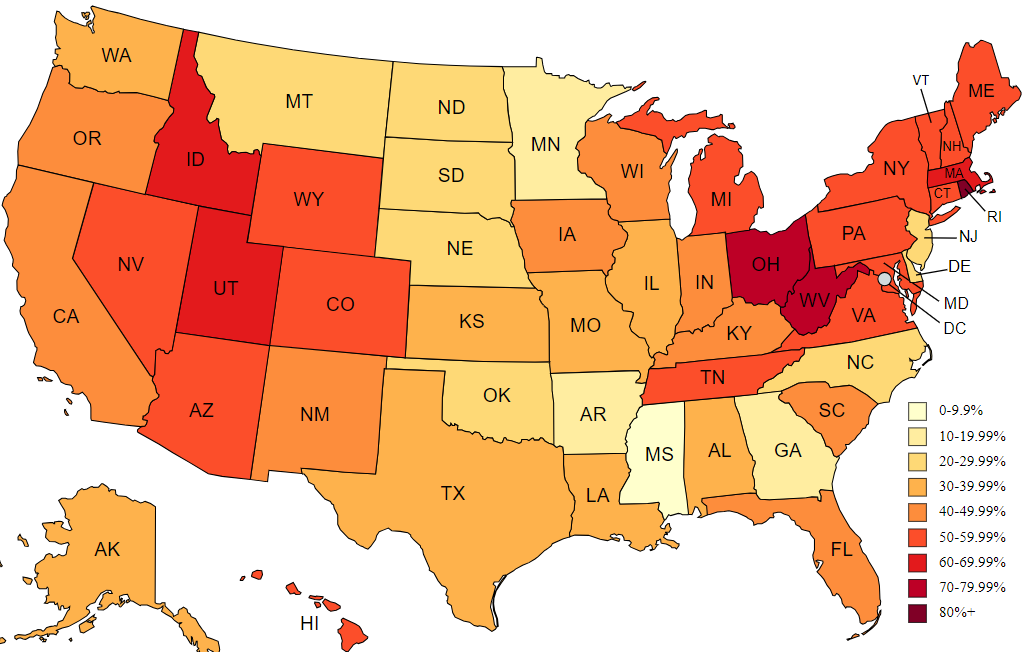Implementation Update: How Has the IRA Advanced Conservation on Farms? | Article
Implementation Update: How Has the IRA Advanced Conservation on Farms? | Article | EESI Climate Change Solutions


Agricultural Producers and Climate Change
Agricultural producers in the United States today are facing the impacts of climate change, including extreme weather events, droughts, and flooding. But climate-smart agricultural practices, which have significant overlap with conservation practices implemented on farms, can help farmers protect their crops while limiting their own greenhouse gas emissions.
Climate-Smart Agricultural Practices
- Cover crops
- Agroforestry
- No-till farming
- Rotational grazing
- Soil amendments
Learn more about climate-smart agricultural practices, like cover crops, agroforestry, no-till farming, rotational grazing, and soil amendments, in EESI’s article series, Agriculture and Climate
The Benefits of Climate-Smart Agriculture
Climate-smart agriculture is not only about mitigating climate change. It can also protect farmers’ livelihoods in an industry where success hinges on the increasingly unpredictable weather. A study by AGree—a coalition of researchers, producers, and nonprofits—shows that when the Midwest faced extreme flooding in 2019, land that had benefited from cover cropping and no-till agriculture was able to absorb more moisture, making planting possible. By contrast, many farmers were unable to plant on land where these techniques had not been used. This study shows how climate-smart practices can provide financial benefits to farmers while helping to protect against the impacts of climate change, making them a smart investment for individual farmers and the federal government.
Funding for Sustainable Agriculture
Through the Inflation Reduction Act of 2022 (IRA) (P.L. 117-169), Congress has dedicated $11.7 billion over four years to support sustainable agriculture through the long-standing Environmental Quality Incentives Program (EQIP) and Conservation Stewardship Program (CSP) managed by the U.S. Department of Agriculture (USDA). These conservation programs are also funded through the Farm Bill, which is up for reauthorization.
The Impact of IRA Funding
A recent report by the Institute for Agriculture and Trade Policy (IATP), Opening the Door for More Conservation: The Inflation Reduction Act’s Impact on Access to Farm Bill Conservation Programs, describes how producers are interfacing with EQIP and CSP. The report is the latest in a series tracking the progress of these programs and their effectiveness for farmers. This series has highlighted that while the programs are highly valuable for those able to access funding, they have been consistently oversubscribed and unable to support the majority of applicants. Another challenge noted by IATP is that EQIP must provide half of its Farm Bill funding to projects related to livestock. Because of this requirement, certain states are less able to access funding due to a lack of livestock farming operations.
Map 1: Percentage of EQIP Applicants Awarded Contracts, FY 2023

Map 2: Percentage of CSP Applicants Awarded Contracts, FY 2023

The maps above, from IATP’s “Opening the Door for More Conservation” report, show the percentage of producers that applied for EQIP and CSP funding, respectively, that received contracts in fiscal year 2023. For more detailed information, see the report, which also includes a table of the number of applications and contracts by state. Credit: IATP.
Challenges and Solutions
Other challenges continue to hinder these Farm Bill conservation programs. According to the author of the IATP report series, Michael Happ, one of the biggest challenges is a lack of staff. Insufficient staffing levels at the Natural Resources Conservation Service (NRCS), which operates both EQIP and CSP, make outreach and relationship building with historically underserved groups extremely difficult. This targeted outreach is key to making climate-smart agriculture more accessible and equitable. But according to Happ, low salaries, combined with the rising cost of living, have forced many local conservationists to leave their NRCS positions after brief stints, which can disrupt trust building with the communities they serve.
As Happ explained to EESI, this issue is more complex than a lack of funds. “We’ve talked to NRCS about this problem and they say, ‘Well, our hands are tied. The salary bands are set by … OPM [the Office of Personnel Management].’” While the influx of funding from the IRA was a step in the right direction, policy changes in coordination with other federal offices could unlock more consistent, on-the-ground support for rural communities.
The Future of Funding
The IRA funding for EQIP and CSP is set to expire in 2031, but Happ hopes that the increase and climate focus will be maintained through the 2024 Farm Bill as a funding baseline. The oversubscription problem reported by almost every state—from Mississippi and Arkansas to Oklahoma and Pennsylvania—indicates high demand that could justify further increases in available funding.
Success Stories
EQIP and CSP contracts can make a huge difference for farmers. The National Sustainable Agriculture Coalition (NSAC) has collected stories from farmers that highlight the impacts of climate change on their land, and how conservation practices—like those funded by EQIP and CSP—have helped them adapt. The stories spotlight farmers across the country who have faced droughts, floods, severe storms, and all the subsequent damage to their crops and land. For example, NSAC shared Martin Larsen’s experience of farming in Byron, Minnesota: “Martin has seen much heavier rainfall than in the past. As he transitions toward a farm that is more resilient, he has adopted a no-till system and a much more well-rounded rotation that includes small grains. The grains help reduce his risk during drier periods, and maintain his soil during wet periods.” Many of the producers featured in the series have received funding from EQIP or CSP to adopt sustainable practices.
The Importance of EQIP and CSP
As highlighted by IATP’s data and NSAC’s stories, EQIP and CSP make a difference for individual producers and can benefit the agricultural sector overall by giving farmers additional tools to protect their land and their bottom line from the effects of climate change, now and in the future.
For Congressional briefings, legislative side-by-sides, a hearing tracker, articles, and podcasts about the Farm Bill and related
SDGs, Targets, and Indicators
1. Which SDGs are addressed or connected to the issues highlighted in the article?
- SDG 2: Zero Hunger
- SDG 13: Climate Action
- SDG 15: Life on Land
2. What specific targets under those SDGs can be identified based on the article’s content?
- SDG 2.4: By 2030, ensure sustainable food production systems and implement resilient agricultural practices that increase productivity and production, that help maintain ecosystems, that strengthen capacity for adaptation to climate change, extreme weather, drought, flooding, and other disasters, and that progressively improve land and soil quality.
- SDG 13.2: Integrate climate change measures into national policies, strategies, and planning.
- SDG 15.3: By 2030, combat desertification, restore degraded land and soil, including land affected by desertification, drought, and floods, and strive to achieve a land degradation-neutral world.
3. Are there any indicators mentioned or implied in the article that can be used to measure progress towards the identified targets?
- Number of farmers adopting climate-smart agricultural practices (e.g., cover crops, agroforestry, no-till farming, rotational grazing, soil amendments).
- Percentage of farmers able to access funding from conservation programs (EQIP and CSP).
- Percentage of EQIP and CSP applicants awarded contracts.
Table: SDGs, Targets, and Indicators
| SDGs | Targets | Indicators |
|---|---|---|
| SDG 2: Zero Hunger | SDG 2.4: By 2030, ensure sustainable food production systems and implement resilient agricultural practices that increase productivity and production, that help maintain ecosystems, that strengthen capacity for adaptation to climate change, extreme weather, drought, flooding, and other disasters, and that progressively improve land and soil quality. | Number of farmers adopting climate-smart agricultural practices (e.g., cover crops, agroforestry, no-till farming, rotational grazing, soil amendments). |
| SDG 13: Climate Action | SDG 13.2: Integrate climate change measures into national policies, strategies, and planning. | N/A |
| SDG 15: Life on Land | SDG 15.3: By 2030, combat desertification, restore degraded land and soil, including land affected by desertification, drought, and floods, and strive to achieve a land degradation-neutral world. | N/A |
Behold! This splendid article springs forth from the wellspring of knowledge, shaped by a wondrous proprietary AI technology that delved into a vast ocean of data, illuminating the path towards the Sustainable Development Goals. Remember that all rights are reserved by SDG Investors LLC, empowering us to champion progress together.
Source: eesi.org

Join us, as fellow seekers of change, on a transformative journey at https://sdgtalks.ai/welcome, where you can become a member and actively contribute to shaping a brighter future.







